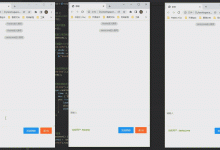写在前边
大家好,从今天起,就决定陆陆续续在公众号开始更新 Java 中级进阶知识点。
最近在关注阿里、腾讯、小米、头条等几大巨头互联网公司的面试题,如果你去这样的大公司面试,就可以发现面试 「Android 高级工程师」职位的时候对 Java 基础以及 Java 的很多相关知识的掌握能力还是很重视的。
所以今天就开始从「Java中级进阶」开始对Java 知识点的全面整理,这些知识点通过自己的分析、整合、筛选出来的,保证这些知识对大家有用。「文章末附带有对该知识点的层次化整理链接,知识点结构更加清晰」。

IO流
1.流
概念:流就是一系列的数据
1.1 什么是流
① 当不同的介质之间有数据交互的时候,JAVA就使用流来实现
② 数据源可以是文件,还可以是数据库,网络甚至是其他的程序
③ 比如读取文件的数据到程序中,站在程序的角度来看,就叫做输入流
输入流: InputStream
输出流:OutputStream
1.2 文件输入流
① 建立了一个文件输入流,这个流可以用来把数据从硬盘的文件,读取到JVM(内存)。
代码:
1File f = new File(\"d:/test.txt\");2// 创建基于文件的输入流3FileInputStream fis = new FileInputStream(f);
2. 字节流
概念:用于以字节的形式读取和写入数据『InputStream、OutputStream』
2.1 ASCII码 概念
① 所有的数据存放在计算机中都是以数字的形式存放的。 所以字母就需要转换为数字才能够存放。
② 比如:A就对应的数字65,a对应的数字97. 不同的字母和符号对应不同的数字,就是一张码表。
③ ASCII是这样的一种码表。 只包含简单的英文字母、符号、数字等等。
2.2 以字节流的形式读取文件内容
① InputStream是字节输入流,同时也是抽象类,只提供方法声明,不提供方法的具体实现。
② FileInputStream 是InputStream子类,以FileInputStream 为例进行文件读取
代码:
1//准备文件test.txt 其中的内容是AB,对应的ASCII分别是65 662File f =new File(\"d:/test.txt\");3FileInputStream fis =new FileInputStream(f);4//创建字节数组,其长度就是文件的长度5byte[] all =new byte[(int) f.length()];6//以字节流的形式读取文件所有内容7fis.read(all);8for (byte b : all) {9//打印出来是65 6610System.out.println(b);11}12//每次使用完流,都应该进行关闭13fis.close();
2.3 以字节流的形式读取文件内容
① OutputStream是字节输出流,同时也是抽象类,只提供方法声明,不提供方法的具体实现。
② FileOutputStream 是OutputStream子类,以FileOutputStream 为例向文件写出数据。
注: 如果文件d:/test2.txt不存在,写出操作会自动创建该文件。但是如果是文件 d:/xyz/test2.txt,而目录xyz又不存在,会抛出异常
代码:
1// 准备文件test2.txt其中的内容是空的2File f = new File(\"d:/test2.txt\");3// 准备长度是2的字节数组,用88,89初始化,其对应的字符分别是X,Y4byte data[] = { 88, 89 };5// 创建基于文件的输出流6FileOutputStream fos = new FileOutputStream(f);7// 把数据写入到输出流8fos.write(data);9// 关闭输出流10fos.close();11} catch (IOException e) {12// TODO Auto-generated catch block13e.printStackTrace();14}
3. 字符流
概念:Reader字符输入流、Writer字符输出流、专门用于字符的形式读取和写入数据。
3.1使用字符流读取文件
代码:
1// 准备文件test.txt其中的内容是AB2File f = new File(\"d:/test.txt\");3// 创建基于文件的Reader4try (FileReader fr = new FileReader(f)) {5// 创建字符数组,其长度就是文件的长度6char[] all = new char[(int) f.length()];7// 以字符流的形式读取文件所有内容8fr.read(all);9for (char b : all) {10// 打印出来是A B11System.out.println(b);12}13} catch (IOException e) {14// TODO Auto-generated catch block15e.printStackTrace();16}
3.2 使用字符流把字符串写入到文件
代码:
1// 准备文件test.txt2File f = new File(\"d:/test.txt\");3// 创建基于文件的Writer4try (FileWriter fr = new FileWriter(f)) {5// 以字符流的形式把数据写入到文件中6String data=\"abcdefg\";7char[] cs = data.toCharArray();8fr.write(cs);9} catch (IOException e) {10// TODO Auto-generated catch block11e.printStackTrace();12}
4.缓存流
介绍:以介质是硬盘为例,字节流和字符流的弊端:
① 在每一次读写的时候,都会访问硬盘。 如果读写的频率比较高的时候,其性能表现不佳。
② 为了解决以上弊端,采用缓存流。
③ 缓存流在读取的时候,会一次性读较多的数据到缓存中,以后每一次的读取,都是在缓存中访问,直到缓存中的数据读取完毕,再到硬盘中读取。
④ 就好比吃饭,不用缓存就是每吃一口都到锅里去铲。用缓存就是先把饭盛到碗里,碗里的吃完了,再到锅里去铲
⑤ 缓存流在写入数据的时候,会先把数据写入到缓存区,直到缓存区达到一定的量,才把这些数据,一起写入到硬盘中去。按照这种操作模式,就不会像字节流,字符流那样每写一个字节都访问硬盘,从而减少了IO操作
4.1 使用缓存流读取数据
代码:
1public static void main(String[] args) {2// 准备文件test.txt其中的内容是3// sdasd4//asdasdasd5// sadsfadc6File f = new File(\"d:/test.txt\");7// 创建文件字符流8// 缓存流必须建立在一个存在的流的基础上9try (10FileReader fr = new FileReader(f);11BufferedReader br = new BufferedReader(fr);12)13{14while (true) {15// 一次读一行16String line = br.readLine();17if (null == line)18break;19System.out.println(line);20}21} catch (IOException e) {22// TODO Auto-generated catch block23e.printStackTrace();24}
4.2 使用缓存流写出数据
概念:PrintWriter 缓存字符输出流, 可以一次写出一行数据
代码:
1// 向文件test2.txt中写入三行语句2File f = new File(\"d:/test2.txt\");3try (4// 创建文件字符流5FileWriter fw = new FileWriter(f);6// 缓存流必须建立在一个存在的流的基础上7PrintWriter pw = new PrintWriter(fw);8) {9pw.println(\"garen kill teemo\");10pw.println(\"teemo revive after 1 minutes\");11pw.println(\"teemo try to garen, but killed again\");12} catch (IOException e) {13// TODO Auto-generated catch block14e.printStackTrace();15}
4.3 flush
概念:有的时候,需要立即把数据写入到硬盘,而不是等缓存满了才写出去。 这时候就需要用到flush
代码:
1//向文件test2.txt中写入三行语句2File f =new File(\"d:/test2.txt\");3//创建文件字符流4//缓存流必须建立在一个存在的流的基础上5try(FileWriter fr = new FileWriter(f);PrintWriter pw = newPrintWriter(fr);) {6pw.println(\"garen kill teemo\");7//强制把缓存中的数据写入硬盘,无论缓存是否已满8pw.flush();9pw.println(\"teemo revive after 1 minutes\");10pw.flush();11pw.println(\"teemo try to garen, but killed again\");12pw.flush();13} catch (IOException e) {14// TODO Auto-generated catch block15e.printStackTrace();16}17}
5. 数据流
介绍:
① 直接进行字符串的读写
② 使用数据流的writeUTF()和readUTF() 可以进行数据的格式化顺序读写
③ 如本例,通过DataOutputStream 向文件顺序写出 布尔值,整数和字符串。 然后再通过DataInputStream 顺序读入这些数据。
④ 注: 要用DataInputStream 读取一个文件,这个文件必须是由DataOutputStream 写出的,否则会出现EOFException,因为DataOutputStream 在写出的时候会做一些特殊标记,只有DataInputStream 才能成功的读取。
代码:
1public static void main(String[] args) {2write();3read();4}5private static void read() {6File f =new File(\"d:/test.txt\");7try (8FileInputStream fis = new FileInputStream(f);9DataInputStream dis =new DataInputStream(fis);10){11boolean b= dis.readBoolean();12int i = dis.readInt();13String str = dis.readUTF();14System.out.println(\"读取到布尔值:\"+b);15System.out.println(\"读取到整数:\"+i);16System.out.println(\"读取到字符串:\"+str);17} catch (IOException e) {18e.printStackTrace();19}20}21private static void write() {22File f =new File(\"d:/test.txt\");23try (24FileOutputStream fos = newFileOutputStream(f);25DataOutputStream dos =newDataOutputStream(fos);26){27dos.writeBoolean(false);28dos.writeInt(200);29dos.writeUTF(\"123 wew d wd s \");30} catch (IOException e) {31e.printStackTrace();32}33}
6. 对象流
6.1 介绍
① 对象流指的是可以直接把一个对象以流的形式传输给其他的介质,比如硬盘
② 一个对象以流的形式进行传输,叫做序列化。 该对象所对应的类,必须是实现Serializable接口
6.2序列化一个对象
①创建一个H对象,设置其名称为g。
②把该对象序列化到一个文件g.txt。
然后再通过序列化把该文件转换为一个H对象。
注:把一个对象序列化有一个前提是:这个对象的类,必须实现了Serializable接口。
代码:
1public class Hero implements Serializable {2//表示这个类当前的版本,如果有了变化,比如新设计了属性,就应该修改这个版本号3private static final long serialVersionUID = 1L;4public String name;5public float hp;6}7public class TestStream {8public static void main(String[] args) {9//创建一个Hero garen10//要把Hero对象直接保存在文件上,务必让Hero类实现Serializable接口11Hero h = new Hero();12h.name = \"garen\";13h.hp = 616;14//准备一个文件用于保存该对象15File f =new File(\"d:/garen.lol\");16try(17//创建对象输出流18FileOutputStream fos = new FileOutputStream(f);19ObjectOutputStream oos =new ObjectOutputStream(fos);20//创建对象输入流21FileInputStream fis = new FileInputStream(f);22ObjectInputStream ois =new ObjectInputStream(fis);23) {24oos.writeObject(h);25Hero h2 = (Hero) ois.readObject();26System.out.println(h2.name);27System.out.println(h2.hp);28} catch (IOException e) {29// TODO Auto-generated catch block30e.printStackTrace();31} catch (ClassNotFoundException e) {32// TODO Auto-generated catch block33e.printStackTrace();34}35}36}
2. 关闭流的方式
概念:所有的流,无论是输入流还是输出流,使用完毕之后,都应该关闭。 如果不关闭,会产生对资源占用的浪费。 当量比较大的时候,会影响到业务的正常开展。
2.1 在try中关闭
弊端:如果文件不存在,或者读取的时候出现问题而抛出异常,那么就不会执行这一行关闭流的代码,存在巨大的资源占用隐患。
代码:
1try {2File f = new File(\"d:/test.txt\");3FileInputStream fis = new FileInputStream(f);4byte[] all = new byte[(int) f.length()];5fis.read(all);6for (byte b : all) {7System.out.println(b);8}9// 在try 里关闭流10fis.close();11} catch (IOException e) {12e.printStackTrace();13}
2.2 在finally中关闭「标准的关闭流的方式」
介绍:
① 首先把流的引用声明在 try 的外面,如果声明在 try 里面,其作用域无法抵达finally .
② 在 finally 关闭之前,要先判断该引用是否为空
③ 关闭的时候,需要再一次进行 try catch 处理
代码:
1File f = new File(\"d:/test.txt\");2FileInputStream fis = null;3try {4fis = new FileInputStream(f);5byte[] all = new byte[(int) f.length()];6fis.read(all);7for (byte b : all) {8System.out.println(b);9}10} catch (IOException e) {11e.printStackTrace();12} finally {13// 在finally 里关闭流14if (null != fis)15try {16fis.close();17} catch (IOException e) {18// TODO Auto-generated catch block19e.printStackTrace();20}21}
2.3 使用 try() 的方式「把流定义在 try() 里,try 、catch 或者 finally 结束的时候,会自动关闭」
代码:
1File f = new File(\"d:/test.txt\");2//把流定义在try()里,try,catch或者finally结束的时候,会自动关闭3try (FileInputStream fis = new FileInputStream(f)) {4byte[] all = new byte[(int) f.length()];5fis.read(all);6for (byte b : all) {7System.out.println(b);8}9} catch (IOException e) {10e.printStackTrace();11}
 爱站程序员基地
爱站程序员基地


